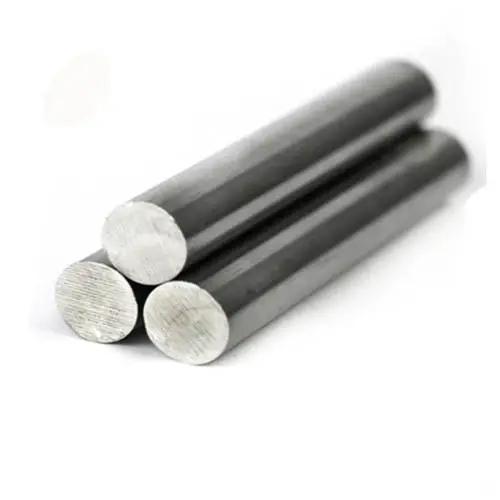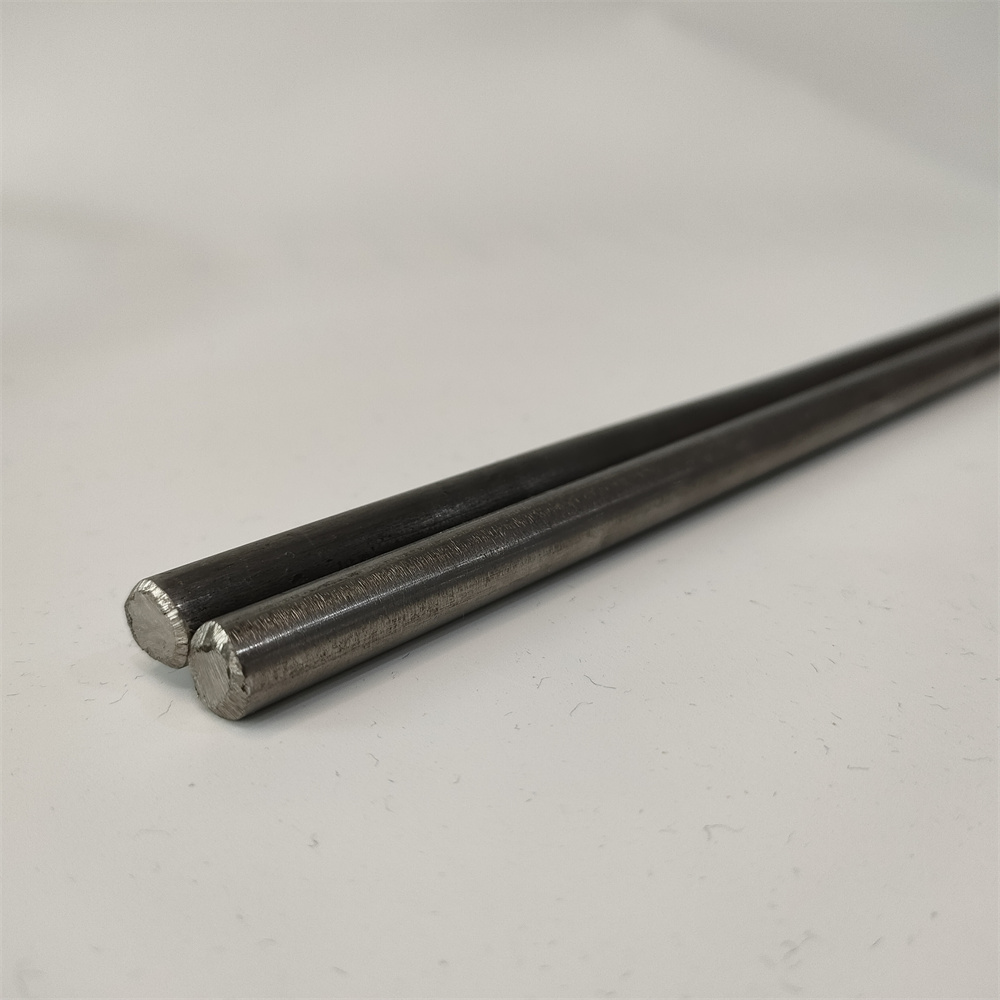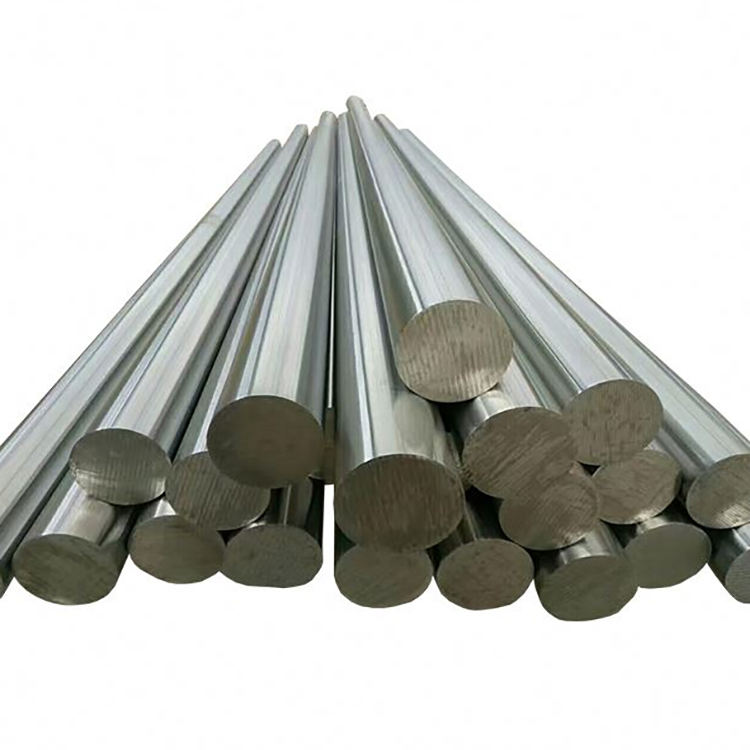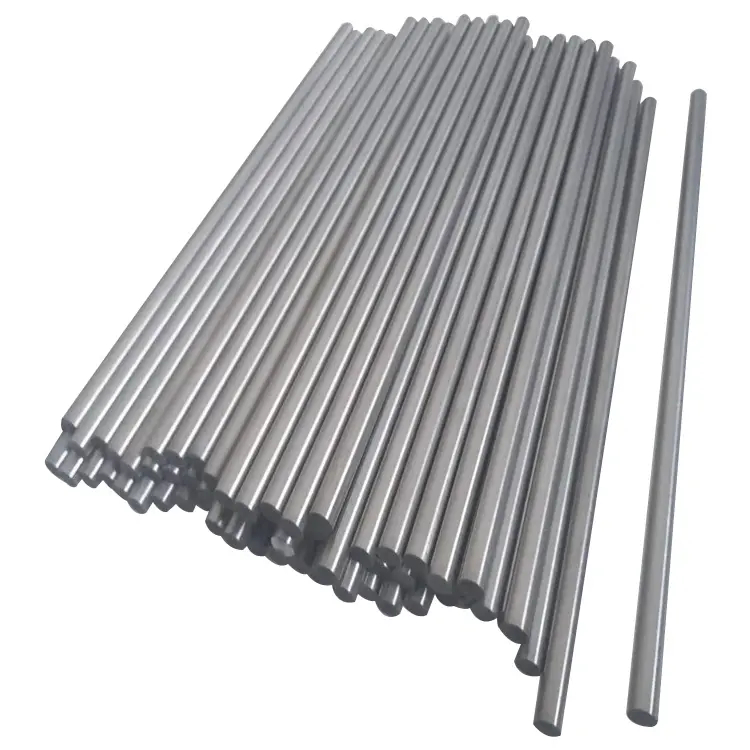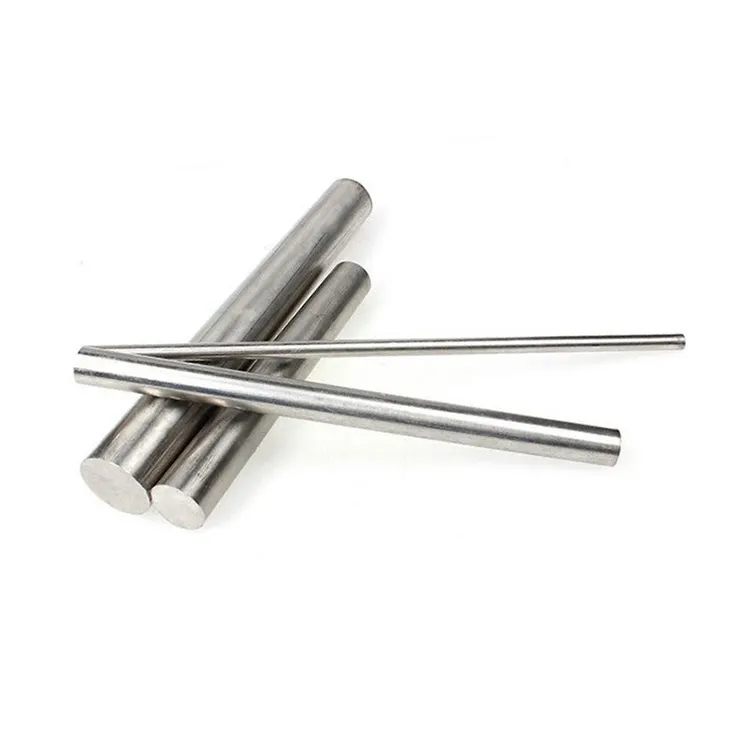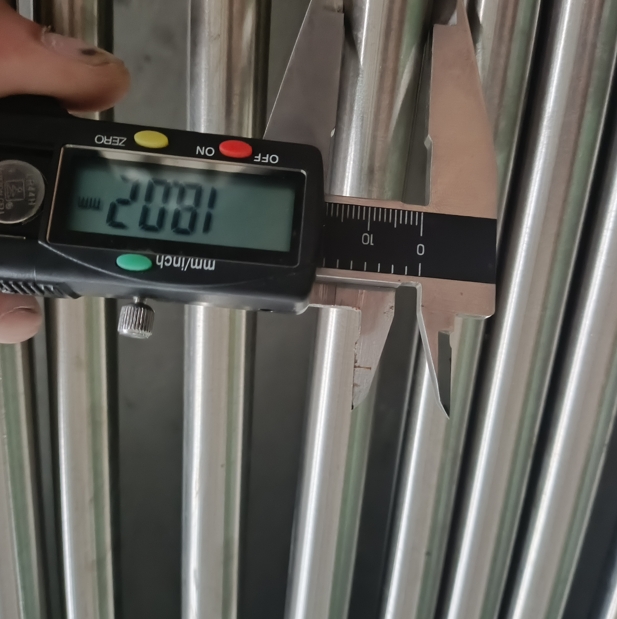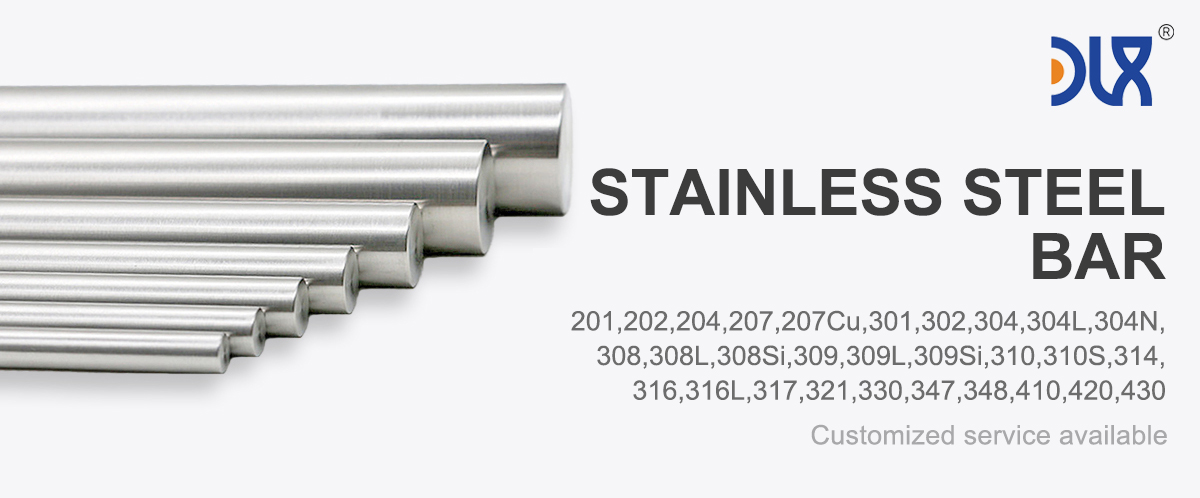
Our medical-grade 440C stainless steel rod is a rockstar in dental instrument manufacturing, delivering the sharpness and toughness that dental professionals rely on. This isn’t just any alloy—it’s a high-carbon, martensitic stainless steel built for precision and durability. With its unmatched hardness and wear resistance, our 440C rod is perfect for crafting dental drill bits, scalers, and other tools that demand razor-sharp performance. We’ve fine-tuned our production to meet ASTM F899 standards, ensuring every rod supports the creation of instruments that make dental procedures smoother and more effective.
What sets our 440C stainless steel rod apart is its robust composition. With 16-18% chromium and 0.95-1.2% carbon, it’s designed to hit a hardness of 56-60 HRC after heat treatment, making it one of the toughest materials for dental tools. Its tensile strength ranges from 760-1000 MPa, with a yield strength of 450-600 MPa, ensuring it can handle the stresses of high-speed drilling or scraping. The chromium content forms a protective oxide layer, offering moderate corrosion resistance against saliva, sterilization chemicals, and oral fluids. We precision-forge and polish each rod to deliver a smooth, defect-free surface, critical for patient comfort and tool longevity.
For more details, pls directly contact us.
In dental settings, performance and cleanliness are everything, and our 440C rod shines. Its high carbon content creates hard carbides, giving it exceptional wear resistance for tools like scalers and curettes that need to stay sharp through repeated use. While its biocompatibility is moderate, making it less suited for long-term implants, it’s ideal for external instruments, with minimal tissue reactivity during procedures. Our electropolishing process creates a mirror-smooth surface, reducing bacterial adhesion by up to 25%, according to clinical studies, which is crucial for maintaining sterility in dental practices.
Comparison of Medical Stainless Steel Grades, Materials, and Applications
Grade | Composition | Key Properties | Corrosion Resistance | Biocompatibility | Applications | Advantages | Limitations |
|---|---|---|---|---|---|---|---|
316L | Fe (60-70%), Cr (16-18%), Ni (10-14%), Mo (2-3%), C (<0.03%) | Tensile: 485-620 MPa, Yield: 170-290 MPa, Elongation: 40-50%, Hardness: 95 HRB | Excellent (passive oxide layer, resists pitting) | High, minimal ion release, rare Ni sensitivity | Bone plates, screws, stents, hip stems, dental implants | Cost-effective, machinable, fatigue-resistant | Possible Ni sensitivity, heavier than Ti |
304L | Fe (65-74%), Cr (18-20%), Ni (8-10.5%), C (<0.03%) | Tensile: 485-550 MPa, Yield: 170-240 MPa, Elongation: 40-55%, Hardness: 92 HRB | Good, less resistant to pitting than 316L | Moderate, higher Ni release risk | Temporary implants, surgical tools, guidewires | Affordable, easy to form, widely available | Limited for long-term implants due to corrosion |
17-4 PH | Fe (70-78%), Cr (15-17.5%), Ni (3-5%), Cu (3-5%), C (<0.07%) | Tensile: 930-1100 MPa, Yield: 725-860 MPa, Hardness: 30-44 HRC | Very good, but less than 316L in saline | Good, but less biocompatible than 316L | Load-bearing implants, surgical instruments | High strength, heat-treatable, durable | Complex processing, less corrosion-resistant |
420 | Fe (80-90%), Cr (12-14%), C (0.15-0.4%) | Tensile: 700-950 MPa, Yield: 340-450 MPa, Hardness: 45-50 HRC | Moderate, prone to pitting in body fluids | Moderate, not ideal for long-term implants | Cutting tools, temporary pins, dental drills | High hardness, wear-resistant, sharpenable | Poor corrosion resistance for permanent use |
440C | Fe (78-85%), Cr (16-18%), C (0.95-1.2%) | Tensile: 760-1000 MPa, Yield: 450-600 MPa, Hardness: 56-60 HRC | Moderate, better than 420 but less than 316L | Limited, high carbon affects biocompatibility | Surgical blades, high-wear tools | Extremely hard, excellent edge retention | Not suitable for long-term implants |
F138 (316LVM) | Fe (60-70%), Cr (17-19%), Ni (13-15%), Mo (2.25-3.5%), C (<0.03%) | Tensile: 490-690 MPa, Yield: 190-300 MPa, Elongation: 40-50%, Hardness: 95 HRB | Superior, optimized for medical use | Excellent, lowest ion release, vacuum-melted | Orthopedic implants, cardiovascular stents | Enhanced purity, top biocompatibility | Higher cost than standard 316L |
303 | Fe (65-75%), Cr (17-19%), Ni (8-10%), S (0.15-0.35%) | Tensile: 500-620 MPa, Yield: 240-290 MPa, Elongation: 35-50%, Hardness: 90 HRB | Moderate, sulfur reduces corrosion resistance | Moderate, not ideal for permanent implants | Machined components, non-implant devices | Excellent machinability, cost-effective | Not suitable for long-term implants |
Nitronic 60 | Fe (60-70%), Cr (16-18%), Ni (8-9%), Mn (7-9%), N (0.08-0.18%) | Tensile: 620-793 MPa, Yield: 345-414 MPa, Hardness: 95-100 HRB | Very good, resists galling and wear | Good, but less studied for implants | Wear-resistant implants, joint components | High wear resistance, galling resistance | Limited medical use, higher cost |
For more details, pls directly contact us.
The dental instrument market is booming, projected to hit $10 billion by 2030, driven by rising demand for cosmetic dentistry and advancements in digital workflows. Our 440C stainless steel rod is a key player, offering a cost-effective, high-performance solution for precision tool manufacturing. Industry trends are leaning toward digital dentistry, with CAD/CAM and 3D printing enabling custom tool designs. Our rods are optimized for these processes, with excellent machinability for intricate shapes. Sustainability is also a big deal—our rods are 100% recyclable, cutting waste and aligning with eco-friendly practices in dental labs.
Challenges in the industry include corrosion risks, with studies showing up to 7% of stainless steel tool failures linked to pitting in the moist, acidic oral environment. We’re tackling this with research into advanced coatings, like ceramic or polymer layers, that boost corrosion resistance by 20%, based on recent data. Regulatory standards, like ISO 13485 and ASTM F899, demand rigorous testing for mechanical properties and cleanliness. Our rods exceed these requirements, with each batch undergoing hardness testing, chemical analysis, and ASTM compliance checks to ensure zero defects. The push for nickel-free materials is growing due to allergies in 10-15% of patients, and our 440C rod, being nickel-free, is a safe choice for most dental applications.
Applications for our 440C stainless steel rod are critical in dental instrument manufacturing. It’s the go-to for drill bits used in cavity preparation and implant placement, where its hardness ensures precise cutting through enamel and dentin. Scalers and curettes made from our rods remove plaque and tartar without dulling, maintaining performance through countless sterilization cycles. We’re also seeing use in orthodontic tools, like wire cutters, where edge retention is key. Endodontic instruments, such as files for root canals, benefit from our rods’ durability and precision. Veterinary dentistry is another growing area, with our rods crafting tools for animal dental care, proving their versatility.
Comparing ourselves to the market, our 440C stainless steel rod stands out for its quality and customization. We source premium raw materials, reducing impurities by up to 200% compared to standard alloys. Our heat-treatment processes are dialed in to maximize hardness while maintaining toughness, ensuring tools like drill bits stay sharp longer. Unlike generic suppliers, we offer tolerances as tight as ±0.002 inches, perfect for micro-machined dental components. Every batch is tested for hardness, tensile strength, and ASTM F899 compliance, guaranteeing reliability in every instrument.
Customization is where we really pull ahead. Need a rod with a specific hardness for a periodontal scaler or a polished finish for a low-friction file? We deliver tailored solutions in days, keeping your production on schedule. Our surface treatments, like passivation and electropolishing, enhance corrosion resistance and cleanliness, reducing bacterial buildup and improving patient safety. Cost-wise, our 440C rods offer high performance at a lower price than titanium or cobalt-chrome, making precision dental instruments accessible to more practices. Our material experts provide hands-on support, helping you integrate our rods into complex designs, saving you time and R&D costs.
Comparison Parameters Table
| Parameter | 440C Stainless Steel | 316LVM Stainless Steel | Titanium (Ti-6Al-4V) | Cobalt-Chrome (Co-Cr) |
|---|---|---|---|---|
| Density (g/cm³) | 7.7-7.8 | 7.9-8.0 | 4.4-4.5 | 8.3-9.2 |
| Elastic Modulus (GPa) | 200 | 193 | 110-114 | 210-240 |
| Yield Strength (MPa) | 450-600 | 190-300 | 800-900 | 450-1000 |
| Tensile Strength (MPa) | 760-1000 | 490-690 | 900-1000 | 900-1200 |
| Hardness (HRC) | 56-60 | ~20 HRC (95 HRB) | ~36 HRC | 30-40 HRC |
| Corrosion Resistance | Moderate (good in dry conditions) | Superior (vacuum-melted) | Superior in body fluids | Very good, but ion release risk |
| Biocompatibility | Moderate, suited for tools | Excellent, low ion release | Excellent, low reactivity | Good, but Co ion concerns |
| Cost | Low | Moderate | Medium | High |
| Common Applications | Dental drill bits, scalers, curettes | Implants, stents | Dental implants | Dental crowns, bearings |
| Wear Resistance | Excellent | Moderate | Good | Very good |
Looking forward, the dental industry is embracing digital tools and robotic-assisted procedures, and our 440C rods are ready for the future. They’re compatible with advanced manufacturing like laser cutting and additive processes, enabling innovative tool geometries. We’re investing in antimicrobial coatings that could reduce oral infection risks by 15%, addressing a key concern in dental care. With rising healthcare costs, our rods provide a budget-friendly option without compromising quality, helping clinics deliver better care. Their durability—lasting through thousands of sterilization cycles—reduces replacement costs, improving ROI for manufacturers.
In essence, our medical-grade 440C stainless steel rod is a foundation for dental instrument innovation. From crafting sharp drill bits to durable scalers, it’s built to perform where precision and reliability matter most. We’re committed to pushing the boundaries, whether through cleaner alloys, smarter finishes, or faster delivery. As dentistry evolves, our rods are at the forefront, enabling manufacturers to create instruments that transform smiles with confidence.
For more details, pls directly contact us.


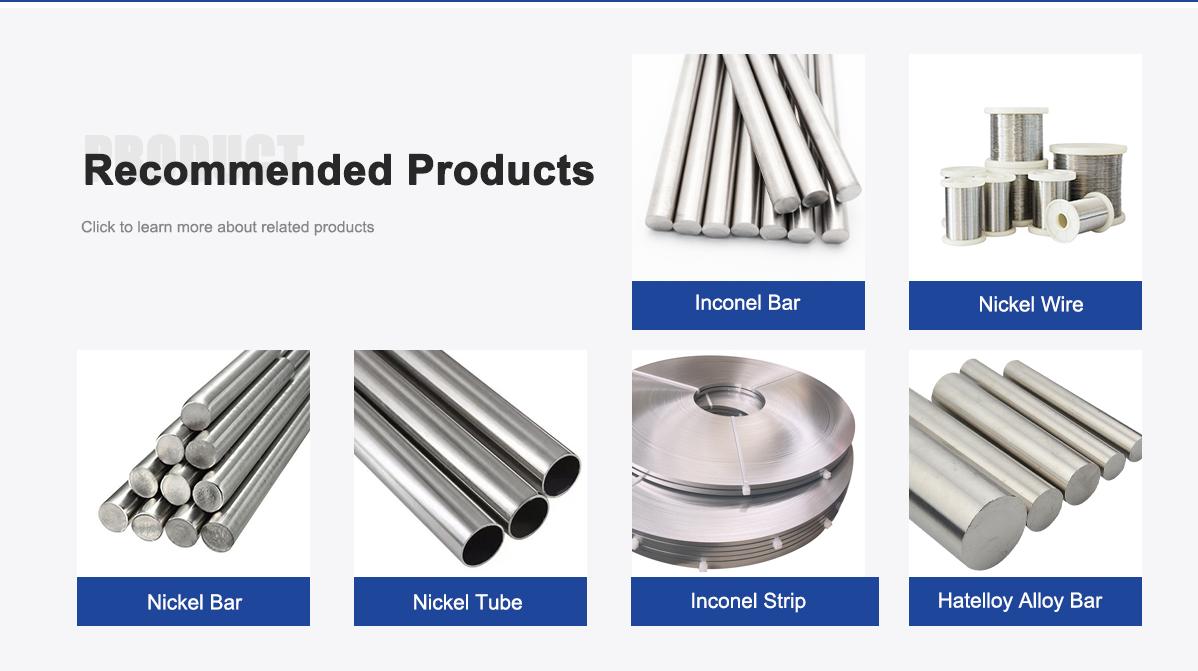
About Us:
Our 12,000㎡ factory is equipped with complete capabilities for research, production, testing, and packaging. We strictly adhere to ISO 9001 standards in our production processes, with an annual output of 1,200 tons. This ensures that we meet both quantity and quality demands. Furthermore, all products undergo rigorous simulated environment testing including high temperature, high pressure, and corrosion tests before being dispatched, ensuring they meet customer specifications.
For all our clients, we offer timely and multilingual after-sales support and technical consulting, helping you resolve any issues swiftly and efficiently.

Client Visits
Building Stronger Partnerships

We support all kinds of testing:


FAQs:
What is the composition of medical-grade 440C stainless steel?
It contains iron (78-85%), chromium (16-18%), carbon (0.95-1.2%), manganese (≤1%), silicon (≤1%), molybdenum (≤0.75%), and trace phosphorus and sulfur.What are the key mechanical properties of 440C stainless steel for dental instruments?
It offers tensile strength of 760-1000 MPa, yield strength of 450-600 MPa, hardness of 56-60 HRC, and elongation of 10-15%, ideal for high-wear tools.How is 440C stainless steel used in dental instruments?
It’s used for drill bits, scalers, curettes, and cutting tools, providing hardness and edge retention for precise dental procedures.What makes 440C stainless steel corrosion-resistant for dental applications?
Its high chromium content forms a protective oxide layer, offering moderate corrosion resistance against saliva, sterilization, and oral fluids.What are current industry trends for 440C stainless steel in dental instruments?
Trends include advanced sharpening techniques, biocompatible coatings for improved performance, and integration with digital dentistry tools like CAD/CAM.Is 440C stainless steel biocompatible for dental instruments?
It has moderate biocompatibility, suitable for external tools but less ideal for long-term implants due to potential ion release.What advantages does 440C stainless steel have over other materials?
It provides superior hardness and wear resistance compared to 316L, with lower cost than titanium, ideal for precision dental tools.How does 440C stainless steel support sustainability in dental manufacturing?
Its recyclability, durability through repeated sterilization, and efficient production reduce waste, aligning with eco-friendly dental trends.

